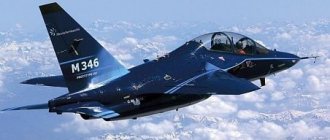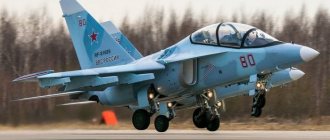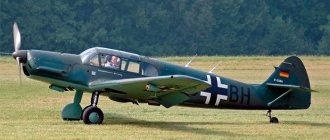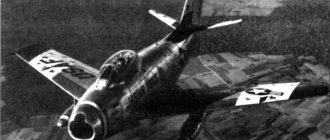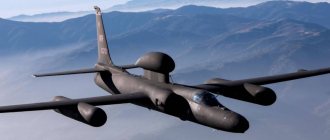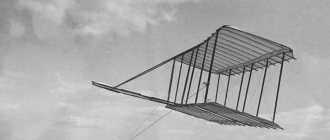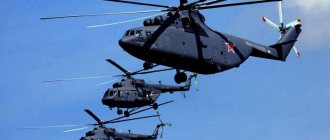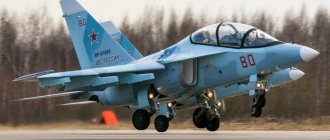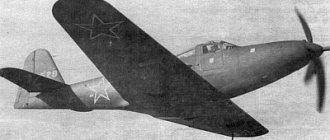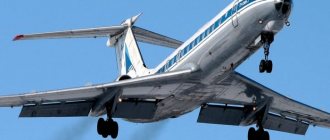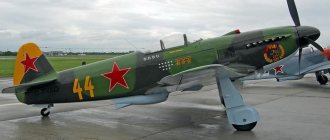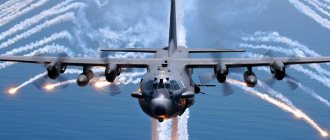American training aircraft T-6C TEXAN II
After the end of World War II, the golden era of propeller-driven aircraft came to an end, and more advanced jet aircraft began to replace them en masse. However, in some niches, propeller-driven aircraft are still relevant. For example, as training aircraft, which are equipped with modern aircraft engines. Machines of this class include the commercially produced American T-6C TEXAN II and the Russian promising training aircraft Yak-152.
Since 2000, more than 900 of these training aircraft of all modifications have been produced. The total flight time of Beechcraft T-6 Texan II aircraft has already exceeded 2.5 million hours, the manufacturer reports. This only confirms the fact that the aircraft is actively used for initial flight training of pilots of the US Air Force and Navy and other countries. The aircraft is actively being exported and is in demand on the global aviation market. On February 16, 2022, the first two Beechcraft T-6C Texan II turboprop trainers out of 10 ordered arrived from the United States at Valley Air Base in the UK.
Thus, the British Air Force became the tenth operator of the Beechcraft T-6 Texan II family of aircraft, mass-produced in the USA by Beechcraft (currently this brand belongs to Textron Corporation). In addition to the USA and Great Britain, this training aircraft is also used by Canada, Mexico, Argentina, Morocco, Greece, Israel, Iraq and New Zealand. The Beechcraft T-6 Texan II is a trainer aircraft that was created and produced by the American company Beechcraft, which until the end of 2006 was a division of the Raytheon Aircraft Company. Today Beechcraft is a division of Textron Aviation. At the same time, Beechcraft is known as a manufacturer of military and civil aircraft. They have always had a reputation as very reliable cars, but at the same time they remained one of the most expensive in their classes.
The aircraft was created as part of the Joint Primary Air Training System (JPATS) program, its main purpose was to replace the aging T-37 and T-34 training aircraft, which were used by the US Air Force and Navy, respectively. Beechcraft specialists began work on creating a new aircraft back in 1990. The first two prototypes of the future trainer were created on the basis of another training aircraft, the Pilatus PC-9 Mk.II. Despite the fact that the plane was similar to its predecessor, in fact, it was a completely new machine. The first flight took place in December 1992 at the company's test site in Wichita.
On June 22, 1995, the new aircraft (then still under the designation Beech Mk.II) won the competition held by the US Department of Defense under the JPATS program. However, the launch of the aircraft into production and delivery to active units was delayed due to competitive disputes and bureaucratic problems. As a result, production began only in February 1997, and the first aircraft was released on June 29, 1998. FAA certification of the new aircraft was completed in August 1999 after 1,400 hours of flight testing. That same year, contracts were signed to supply 372 T-6 Texan II aircraft to the US Air Force and 339 to the US Navy. At the same time, contracts were received for the supply of 24 aircraft for the NATO Training Center located in Canada and 45 aircraft for the Greek Air Force. The Beechcraft T-6 Texan II became the successor to another famous American light trainer, the North American T-6 Texan, which was in mass production since 1937 and was actively used to train future fighter pilots until the 1950s.
Despite its external similarity to the Swiss Pilatus PC-9 trainer, the American T-6 Texan II is a significantly redesigned design. American and Swiss aircraft have only 30 percent of common components and elements. In particular, the T-6 Texan II received an extended fuselage and a pressurized cockpit (the Pilatus PC-9 did not have pressurization). The Beechcraft T-6 Texan II trainer is a classic low-wing monoplane with retractable tricycle landing gear and a single turboprop engine. A fairly powerful Pratt & Whitney PT6A-68A turboprop engine was used as the power plant, developing a maximum power of 1100 hp. The aircraft crew consists of two people (a trainee and an instructor), who are located in a sealed two-seat cabin in a tandem arrangement (sitting one behind the other).
The onboard equipment of the T-6C TEXAN II aircraft (the latest existing version, there are even earlier T-6A and T-6B) meets the requirements and standards of the 21st century - multifunctional three-color displays are installed in the cockpits, there are wide-angle indicators on the windshield, the so-called Head-Up Display system with the F-16 or F/A-18, which is designed to display information on the windshield without limiting the pilot's view. All this made it possible to implement the principle of a fully digital, open “glass cockpit” architecture with an instrument panel for control and display of flight data (UFCP), a HOTAS (Hands-On Throttle And Stick) type control system. Also, all T-6C model aircraft are equipped with six underwing hardpoints, which can be used to install external fuel tanks or various weapons. The maximum payload is about 1319 kg, the maximum flight speed of the vehicle is 585 km/h. The maximum flight range is 1637 km.
According to the manufacturer, the aircraft can be effectively operated in a wide range of temperatures - from -54°C to +50°C, this provides it with a fairly large geographical distribution on the global arms market. The company also reports that the aircraft’s flight service life has been increased to 18,720 hours. At the same time, the aircraft underwent testing, during which it demonstrated a threefold excess of this value - 56,160 hours.
In addition to direct training options, the Americans are also promoting a version of a light attack aircraft on the market; such vehicles are today classified as counter-guerrilla aircraft. This version was designated AT-6 Wolverine. The aircraft received a modern optoelectronic sighting station, a self-defense complex, including an AN/AAR-60 missile warning station, as well as AN/ALE-47 infrared decoy and chaff ejection devices. In addition, the aircraft was able to use a wide range of various weapons. In addition to the usual free-falling bombs, the arsenal of such an attack aircraft includes unguided missiles and shooting containers. It can also use some types of guided weapons - the AIM-9 Sidewinder close-combat air-to-air missiles, the AGM-114 Hellfire air-to-surface missiles and the Paveway family of guided bombs. It is also possible to install separate containers with reconnaissance equipment.
Flight characteristics of the T-6C TEXAN II: Overall dimensions: length - 10.16 m, height - 3.25 m, wingspan - 10.2 m, wing area - 16.28 m2. Empty weight – 2336 kg. Maximum take-off weight – 3130 kg. Powerplant – Pratt & Whitney PT6A-68A 1100 hp. Maximum flight speed is 585 km/h. The maximum flight range is 1637 km. The maximum ferry range is 2559 km (with two external fuel tanks). Practical ceiling – 9449 m. Maximum permissible overload: +7.0/-3.5 g Number of suspension points – 6 (maximum payload – 1319 kg). Operating temperatures: from -54°C/+50°C Crew – 2 people.
Sources of information: https://www.airwar.ru/enc/other/t6b.html https://nevskii-bastion.ru/at-6-usa https://defense.txtav.com/en/t-6c #features (all photos) Materials from open sources
Operators[edit]
Map showing T-6 Texan II operators in blue
Greek Air Force T-6A Texan II during CIAF Brno
T-6A Texan II Iraqi Air Force
RMAF's T-6S Texan II at the Marrakesh Air Show
Argentina
- Argentine Air Force - 12 T-6S+ ordered, six delivered as of June 2022[30]
Canada
- Royal Canadian Air Force - 24 aircraft operated from CFB Moose Jaw, Saskatchewan [12] 2 Canadian Forces Flight Training Schools - 24 CT-156 Harvard II aircraft for pilot training. [41]
Greece
- Hellenic Air Force 45 T-6A [42]
Iraq
- Iraqi Air Force [43]
Israel
- Israeli Air Force 20 T-6A [44]
Mexico
- Mexican Air Force delivered 6 T-6C+ in 2012. [23] [45] An additional order was made for 6 more aircraft, with delivery due at the end of 2013. [46]
- Mexican Navy [47]
Morocco
- Royal Moroccan Air Force 24 T-6S in service as of January 2012.[21]
New Zealand
- Royal New Zealand Air Force - 11 aircraft operated from RNZAF Base Ohakea, Manawatu 14 Squadron - Pilot Training [48]
- Central Flight School - training of qualified flight instructors
- Black Falcons - Aerobatic Team
Thailand
- Royal Thai Air Force 12 T-6TN. [49] Delivery is scheduled for 2022–2023. [50]
United Kingdom
- Royal Air Force [27] RAF Valley, Anglesey, Wales 72 Squadron - 10 Texan T1s for basic fast jet training. [51]
United States
- United States Air Force Air Education and Training Command
- Redstone Arsenal, Huntsville, Alabama
- Naval Air Training Command
AT-6B at the RIAT 2010 exhibition
History of the creation of the DI-6 fighter
The idea of a two-seat fighter captured the minds of many inventors in the 1920s and 30s. Compared to single-seat fighters, such machines should be more effective when attacking bombers, and they could also defend themselves much better in air combat. However, everything was complicated by technical capabilities - a two-seat fighter is always heavier and larger than a single-seat one, and also has worse aerodynamics, while aircraft engines still could not boast of much power. Accordingly, while winning in one, the plane inevitably lost in the other.
Work on a number of aircraft with the general designation “ DI ” (two-seat fighter) was also carried out in the USSR. 2I-N1 (1926) and DI-2 (1929) by N.N. Polikarpov, DI-3 (1931) by D.P. Grigorovich, DI-4 (1933) by A. Laville - it was there are many of them, but not one of them ever reached mass production. This continued until 1935, when the group at the Design Bureau of Sergei Aleksandrovich Kocherigin, under the leadership of Vladimir Panfilovich Yatsenko, managed to do the impossible - to create a two-seat fighter that was completely competitive in battle with a single-seat one. It was called DI-6 , and was one of the most unusual biplanes in the history.
By and large, Kocherigin and Yatsenko did not invent anything new, but only rationalized the old and well-known. The DI-6 had retractable landing gear (for the first time on a biplane), the gunner's cockpit was covered with a transparent canopy, and the lower wing was connected to the fuselage with well-streamlined fairings. As a result, in terms of speed, the DI-6 was not inferior to its contemporary single-seat biplane fighters I-15 and I-15bis. Interestingly, the dimensions of the DI-6 also corresponded to the I-15 - I-153. This was achieved due to an exceptionally dense layout.
Drawing of a two-seat fighter DI-6
In 1935, the DI-6 successfully passed tests and was put into mass production. Since 1937, it was produced with a more powerful and high-altitude M-25V engine (instead of the M-25, licensed "Wright-Cyclone"). Moreover, the DI-6 was not only mass-produced, but also managed to fight - the unusual fighter had to operate in Mongolia, in 1939.
Unfortunately, by the beginning of the 1940s. biplanes, even the most modern ones, are already morally obsolete. Further continuation of work to improve the DI-6 was inappropriate.
In total, during production from 1936 to 1938. 222 two-seat DI-6 fighters were built.
Design of the DI-6 fighter and main modifications
The DI-6 fighter was a two-seat biplane of mixed construction and had a truss fuselage welded from pipes, metal wing struts, wooden wing spars and fabric covering of the wings and tail. The aircraft was equipped with an M-25 engine (Wright-Cyclone) with a power of 640 hp, closed with an annular hood, and later, on an M-25B with a power of 700 hp. Starting the engine was possible from an electric starter, manual drive and through a ratchet on the screw.
The DI-6 aircraft was the world's first biplane fighter with retractable landing gear. The chassis as a whole turned out to be successful and made it possible to significantly reduce aerodynamic drag. A ski landing gear was also developed for the aircraft, which also retracts into the center section.
The armament consisted of three ShKAS machine guns: two of them were installed in the lower wing outside the propeller disk and one on a pivot mount to protect the rear hemisphere. On an external sling, the fighter could carry up to 50 kg of bombs (8-10 kg each).
Combat use of the DI-6 fighter
In air battles with Japanese aviation in Mongolia in the summer of 1939, DI-6 aircraft effectively fought not only bombers, but also enemy fighters. In the winter of 1939, during the Soviet-Finnish war, DI-6Sh attack fighters successfully operated against ground forces. DI-6 aircraft also took an active part in combat operations in the first months of the Great Patriotic War. An interesting fact is that according to official data from the Luftwaffe, the DI-6 was regarded as a full-fledged combat aircraft until April 1942.
At the Borisoglebsk Flight School, several DI-6 fighters were converted into dual-control trainers (using components and parts from the R-5 and UTI-4 aircraft). The rear machine gun was not installed on them. The cars turned out to be successful, and several copies were produced in series.
Modifications of the two-seat fighter DI-6
• Directory of aviation • Aircraft of the same period • Fighters of the USSR and Russia •
Source: compilation based on publicly available information on the Internet
See also[edit]
- Aviation portal
Related development
- Pilatus PC-9
Aircraft of comparable role, configuration and era
- Embraer EMB 314 Super Tucano
- Fuji T-7
- HAL HTT-40
- Pilatus PC-21
- KAI KT-1
- PZL-130 Orlik
- Short toucan
- TAI Hurkuş
- UTVA Kobac
Related Lists
- List of active Canadian military aircraft
- List of active US military aircraft
